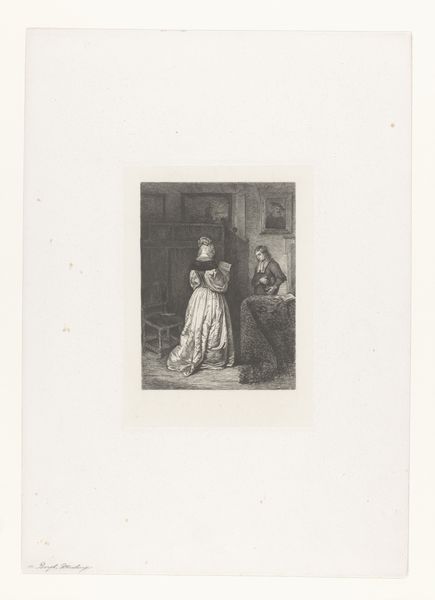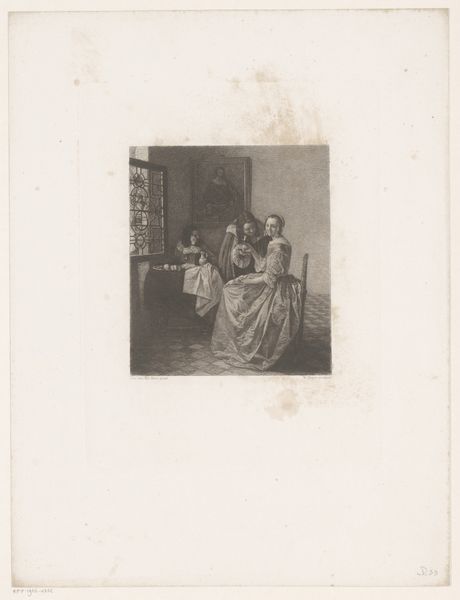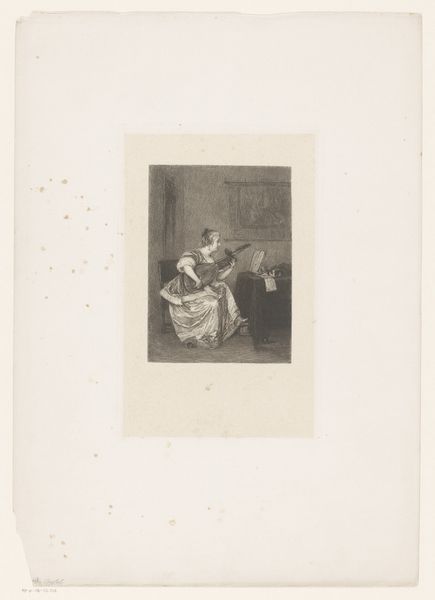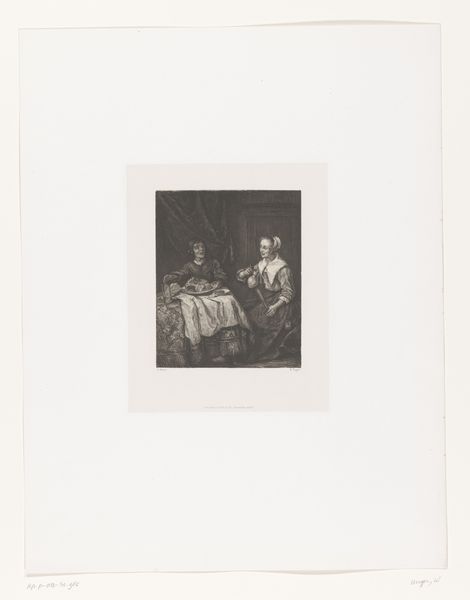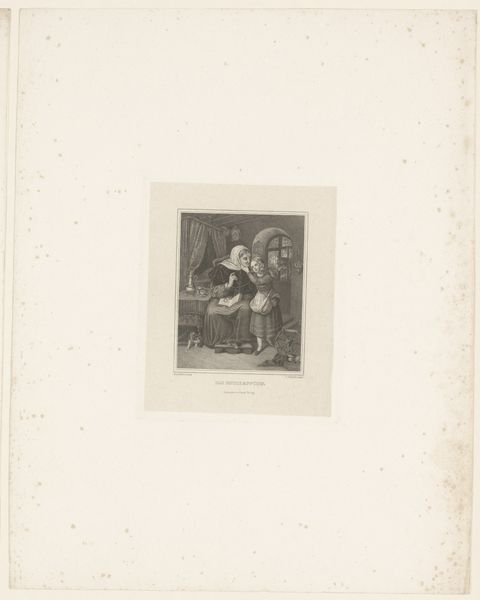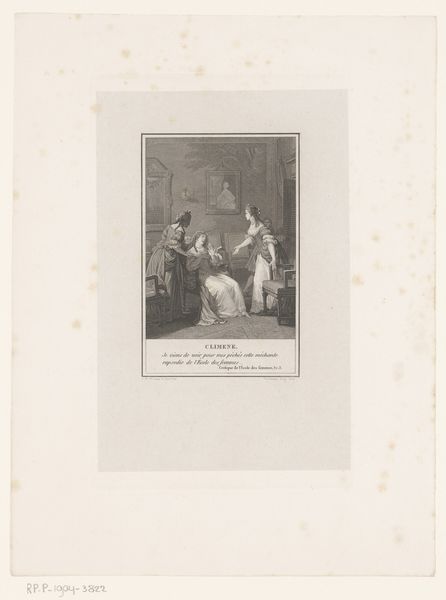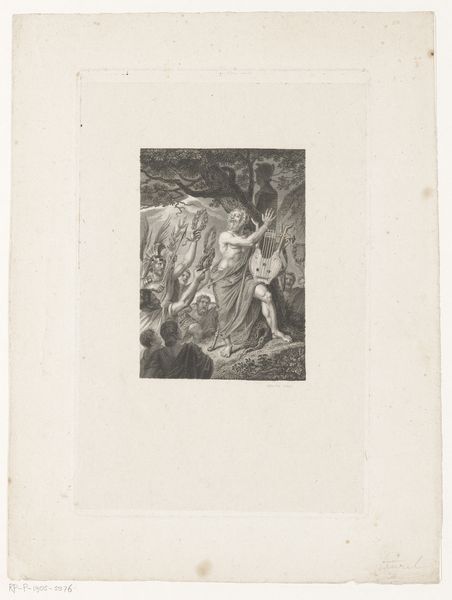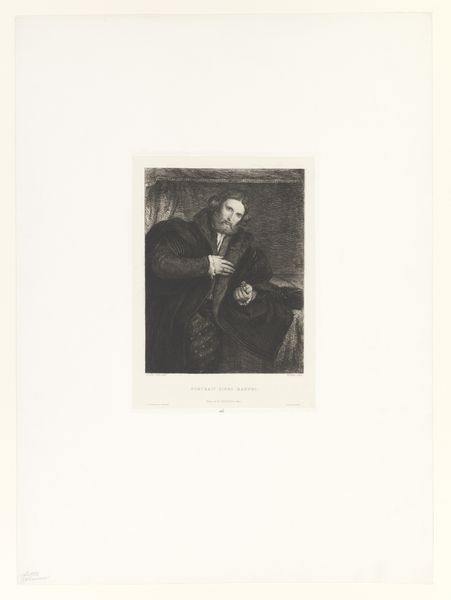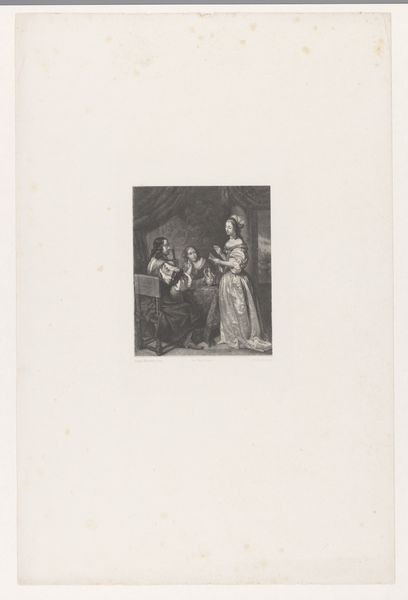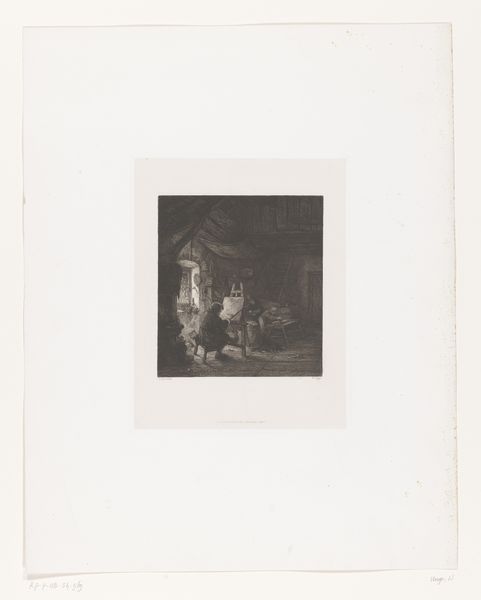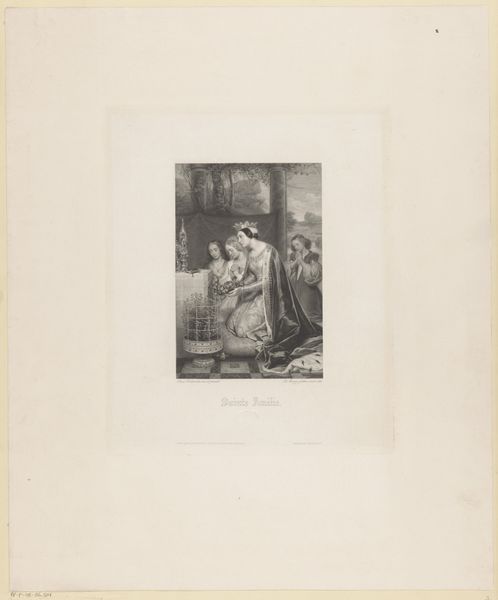
drawing, etching
#
portrait
#
drawing
#
medieval
#
narrative-art
#
expressing emotion
#
etching
#
white palette
#
genre-painting
#
realism
Dimensions: height 258 mm, width 191 mm
Copyright: Rijks Museum: Open Domain
Curator: Examining "Doktersbezoek", a compelling etching thought to have been created between 1857 and 1914 by Nikolay Semyonovich Mosolov, reveals quite an evocative narrative scene. What are your initial impressions? Editor: Well, initially, the stark contrast catches my eye; it uses a fairly white palette. There is an almost theatrical tension created through the high contrast between light and shadow—somber, really. Curator: Indeed, the pronounced chiaroscuro emphasizes the gravity of the consultation. In viewing the composition formally, notice the interplay between the central ailing figure, flanked by the physician and another woman, probably an attendant. It produces a kind of triangular structure and balances the figures' spatial relation. The patient embodies physical and social vulnerability, literally caught between masculine authority and female support. Editor: Beyond just the individuals represented in "Doktersbezoek", this really seems to fit into a larger social commentary on healthcare and domesticity of that time. We get the distinct feeling of what medicine meant to those women living in those domestic settings. Look at their detailed clothing; It speaks to a level of material wealth but does nothing to prevent illness. The drawing captures a complex dynamic between societal status, wellness, and medical practice. Curator: Absolutely. And looking closely, the artist makes several calculated decisions on rendering this tableau, doesn't he? How the fabric drapes, where the light falls—every decision affects our perception and, by extension, how we interpret the underlying emotional themes. Note the realism deployed to construct emotion and express drama to amplify that perception. Editor: I agree, there is an interplay of vulnerability and concern. Considering that etchings would have been reproduced and distributed quite widely, how do you think a piece like this would have been received back in its time, given how accessible this was? Curator: Likely it would be seen as a window into domestic life, relatable or intriguing depending on the viewer's context. A sort of "genre painting" brought directly into one's home. Editor: It highlights the intersection of health, wealth, and vulnerability, reminding us of the timeless struggles that shape human experiences, even when seen from such drastically different positions. Curator: I must admit, contemplating its intricate elements offers profound insights into form, emotional resonance, and the mechanics of visual communication itself. It moves past the content it expresses.
Comments
No comments
Be the first to comment and join the conversation on the ultimate creative platform.
